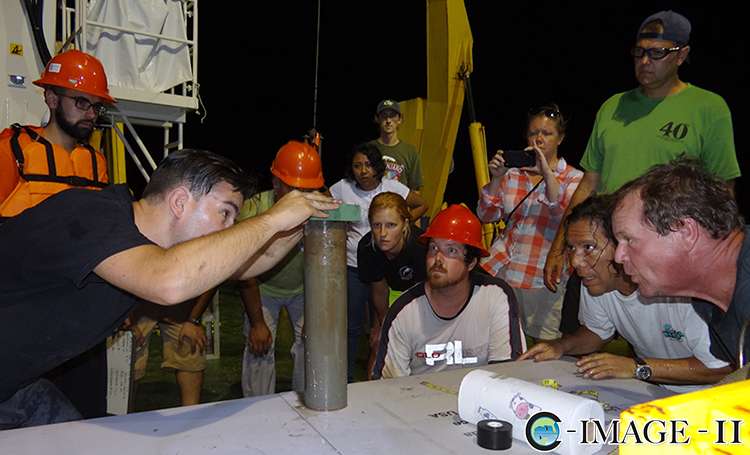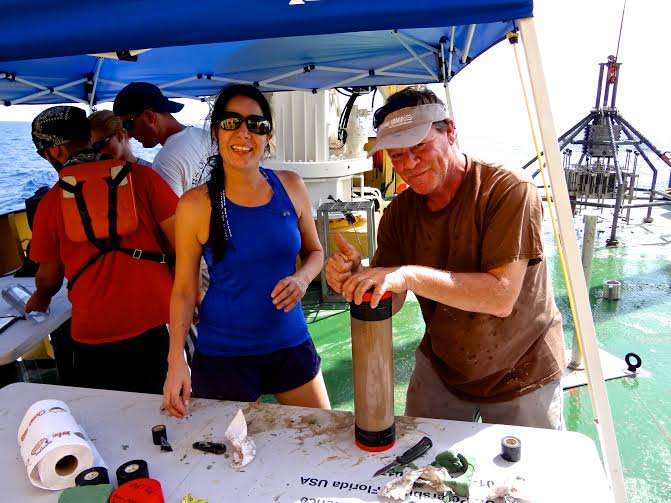USF research collaboration compares IXTOC oil spill to Deepwater Horizon spill

Scientists from the University of South Florida's (USF) College of Marine Science, Universidad Nacional Autónoma de México (UNAM), and colleagues from several other universities have just returned from a two week trip three and a half decades into the past aboard R/V (research vessel) Justo Sierra, a 162-foot, 821-ton ship outfitted for research. Their voyage took them to the site of the 1979-1980 IXTOC oil spill in the Gulf of Mexico, the impacts of which had not been studied for 35 years.
"The IXTOC oil spill poses an array of questions for researchers," said Dr. David Hollander, USF College of Marine Science associate professor in chemical oceanography and the chief scientist overseeing the IXTOC cruise. "We wanted to examine the long term environmental effects of major oil spills. By looking at IXTOC, we hope we will be able to better predict the long term effects of the 2010 Deepwater Horizon spill in terms of the chemical and biological consequences of oil that reached the sea bottom. The research will not only help us to better understand the impact of IXTOC, but also help to project what the Deepwater Horizon area will be like in terms of oil toxicity in 35 years."
After departing into the Gulf Coast of Mexico from Tuxpan, Mexico, near Veracruz, on July 30, and arriving at the research site, members of the international research team from USF, Penn State University, the University of Calgary, Florida State University, Texas A&M University-Corpus Christi, and UNAM, performed around the clock sampling of the biology, chemistry and geology of ocean bottom sediments and water samples. They were particularly interested in studying oil degrading bacteria, the organic chemistry of oil contaminants, microscopic shelled animals called "forams," carbon isotopes, and burrowing worms.
The research aboard R/V Justo Sierra was carried out as part of the work being done by scientists from the Center for Integrated Modeling and Analysis of Gulf Ecosystems (C-IMAGE) and includes researchers from seven research institutions in six countries. Dr. Hollander is the Chief Science Officer of the C-IMAGE consortium, which has been funded by the Gulf of Mexico Research Initiative to study long-term ecosystem impacts of the 2010 Deepwater Horizon oil disaster.

"Bringing UNAM's knowledge, expertise, and perspectives to the USF-hosted C-IMAGE consortium benefits not only our students and researchers, but the overall understanding of how human impacts affect our valuable shared seas," said Dr. Elva Escobar, Director of the UNAM-Instituto de Ciencias del Mar y Limnologia (Institute of Marine Science and Limnology). "Studying the IXTOC oil spill in comparison to Deepwater Horizon allows us to better understand mechanisms that result in oil at the sea bottom, and to project what the Deepwater Horizon area will look like three decades from now."
After 13 days at sea, R/V Justo Sierra docked August 10 in Brownsville, Texas. The samples collected on the voyage are now on their way back to the participating universities for analysis. The IXTOC voyage is the first of three major Gulf of Mexico research expeditions by C-IMAGE scientists this summer. Preliminary research results will be presented at the 2016 Gulf of Mexico Oil Spill & Ecosystem Science Conference in Tampa, FL.
Provided by University of South Florida




















